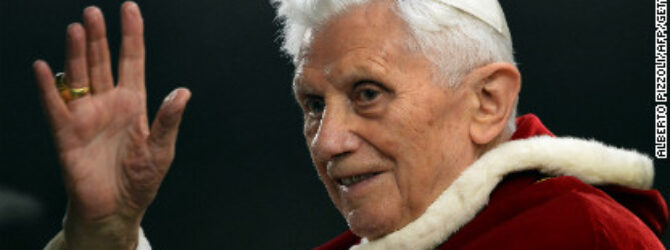
Vatican: Conclave to elect new pope may start sooner than expected
The Vatican is raising the possibility that the conclave to elect the next pope might start earlier than March 15, the earliest date possible under current rules that require a 15-20 day waiting period after the papacy becomes vacant.
Vatican spokesman The Rev. Federico Lombardi said top officials can study the Holy See’s constitution to determine whether such a rule change is possible. The 15-20 day rule is in place to allow time for the arrival in Rome of “all those (cardinals) who are absent.”
But Lombardi noted that the cardinals already know that this pontificate will end on Feb. 28 and can get to Rome in plenty of time. He said the Vatican rules are open to interpretation and that “this is a question that people are discussing.”
Rumors, speculation fly over Pope’s move
Pope Benedict will reside at a convent inside the Vatican after he steps down Feb. 28. He told a gathering of parish priests in Rome that he will be “hidden to the world.”
The pope’s resignation sets in motion a complex sequence of events to elect the next leader of the Roman Catholic Church, which started Lent – the 40 day period before Easter, the most important feast in the Catholic Church – on Wednesday. Church officials would like a new pope in place by March 24, the beginning of Holy Week.
Here are the rules governing the papal election:
Cardinals eligible to vote — those under age 80 — are sequestered within Vatican City – including handing over cell phones and other devices – and take an oath of secrecy. The Cardinals meet every day in the Sistine Chapel until a new pope is elected and have no contact with the outside world until the process is complete.
Any baptized Roman Catholic male is eligible for election as pope, but only cardinals have been selected since 1378.
Two ballots held each morning and two each afternoon in the Sistine Chapel. A two-thirds majority is required. Benedict in 2007 reverted back to this two-thirds majority rule, reversing a 1996 decision by Pope John Paul II, who had decreed that a simple majority could be invoked after about 12 days of inconclusive voting.
Ballots are burned after each round. Black smoke means no decision; white smoke signals that cardinals have chosen pope and he has accepted. Bells also signal the election of a pope to help avoid possible confusion over color of smoke coming from chimney of the Sistine Chapel.
The new pope is introduced from the loggia overlooking St. Peter’s Square with the words “Habemus Papam!” (Latin for “We have a pope!”) and he imparts his first blessing.